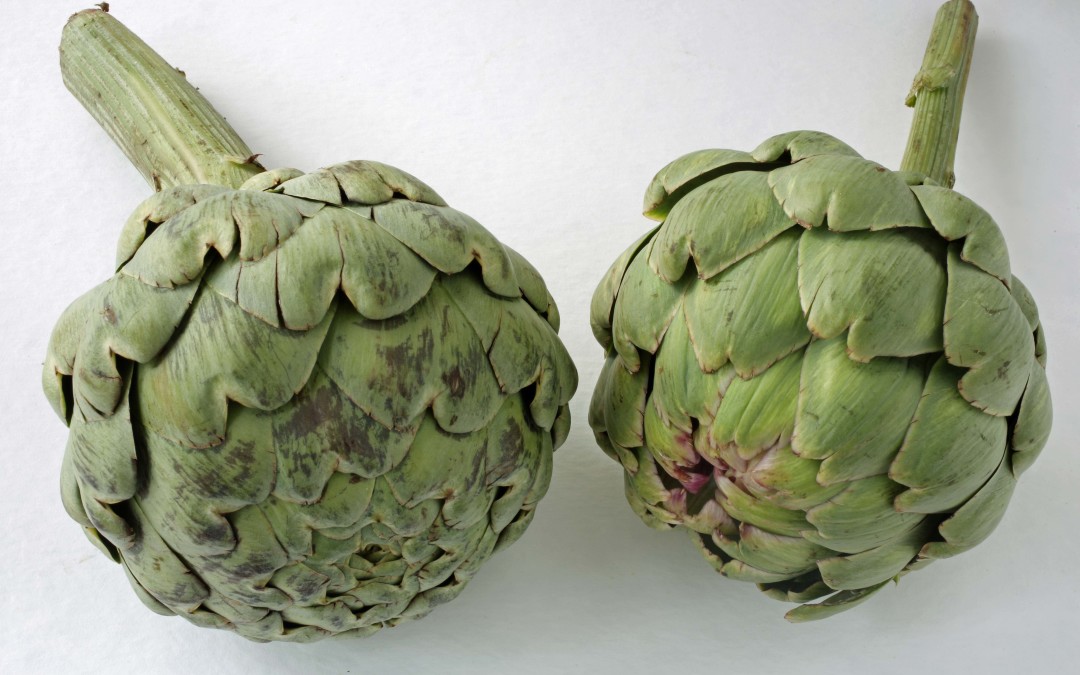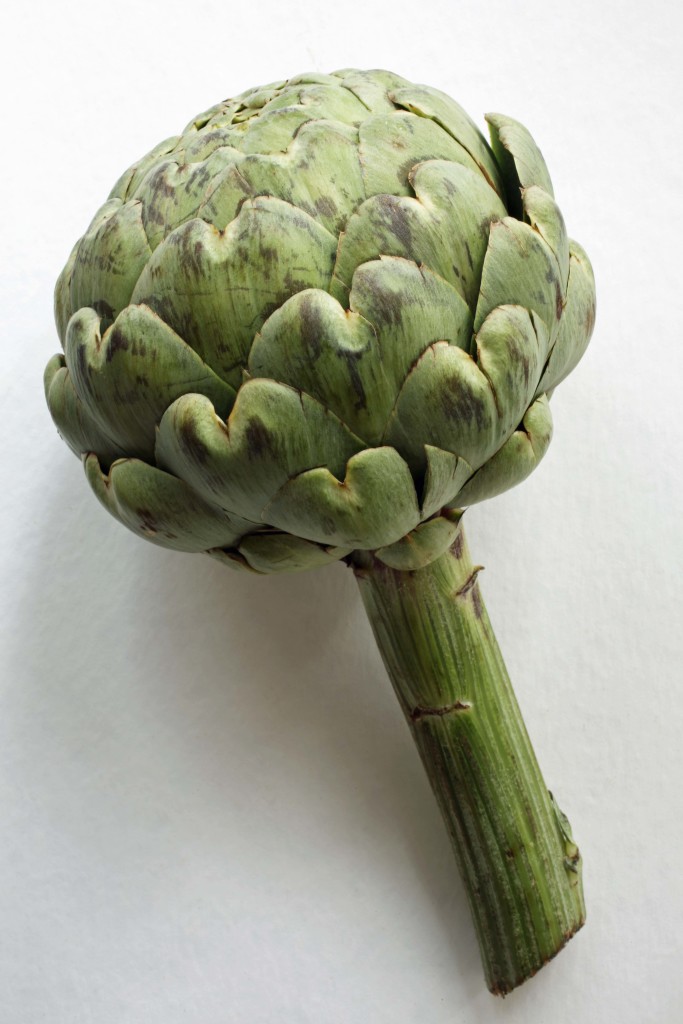FYI…This how to peel an artichoke post contains affiliate links for products we like. This means that if you click on a product link on this page, and then purchase the product, The Culinary Exchange will make a small amount of money from your purchase. However, we ONLY link to products that Chef Matthew Robinson personally recommends.
Fun fact: the artichoke is the only type of thistle you can eat. In fact, everyone should eat more artichokes as they’re delicious – especially when you mix them up with spinach and turn it into a hot dip (a la spinach artichoke). One thing that keeps a lot of people from buying more fresh artichokes is that they can be a little intimidating. And for good reason. Visually, they resemble tiny little bushes. And their “petals” that cover the interior portion of the artichoke are tough and hard to peel off, so it’s no surprise that most people opt out of grabbing an artichoke or two at the store. But this is big mistake, because artichoke is absolutely delicious and pretty healthy to boot.
Before you get started, you should have a better idea of the makeup of the artichoke, because there are a few different parts that you’re going to need to cut through before you get to the good part – the artichoke heart.
At the base of the artichoke (at the top of the stem, but the bottom of the flower bud), you’ve got the artichoke heart. The stem is directly underneath that and looks like a thick plant stem. Directly on top of the heart is the center choke. The center choke is flanked on all sides by the inner petals. These are softer than the outer petals and have a white and purplish hue to them. Around the inner petals are the hard outer petals, which are the parts you see and touch when you pick up an artichoke, before you cut it. At the tips of the outer petals are sharp edges called “thorns”. These can hurt a little if you aren’t careful and paying attention.
Now, on to the peeling.
How to Peel an Artichoke
Before we get started, you’ll need to gather a few tools: a small bowl filled with water and lemon; a lemon wedge; a pair of scissors, and a paring knife. These will make the whole process a lot easier. The lemon juice is to hold the artichoke heart after you peel it so that it doesn’t turn brown.
Start by washing the artichoke under cold water to wash it off. Next, use the knife to cut off the top 1/3rd of the top of the outer petals. This part of the artichoke is tightly closed and is hard to peel, so we cut it off. Next, trim off the thorns on the remaining outer petals with a pair of scissors. Then, use the knife to cut off the stem about a half inch from the bottom of the base of the artichoke.
Now the peeling starts. You can use your hand to pull off all of the outer petals or you can use the paring knife to slice around the outer petals to slice them right off. This method is a lot quicker, so we recommend doing it this way. Once you’ve gotten through the outer petals, you’ll be left with the softer inner petals, but we need to get rid of these too.
But first, use the knife to trim around the base of the artichoke to remove the outer petals there too. Also use the paring knife to slice off the outer skin of the remaining stem.
Then, use a spoon to scoop out the small hairy part that sits directly on top of the artichoke heart. You can also use the spoon to get rid of the purple inner leaves too. What you’re left with is the artichoke heart, and you’re ready to cook it however you’d like. Or, dump it in the lemon water and start on the next one!
Come On! Follow Along!







You can peel and eat the stem as well its tender,sweet and almost as good at the heart also we cook the entire artichoke. Pull the leaves off and pull teeth along the bottom and eat the flesh. Then you can take a spoon and take the choke out and you’re left with the heart to dip in butter which you do the bottom of the leaves as well before you eat them.This way seems wasteful…
So true Meghan! They are so tasty. I free with you about the stem. I never let it go to waste. Lots of good eating in the stem!